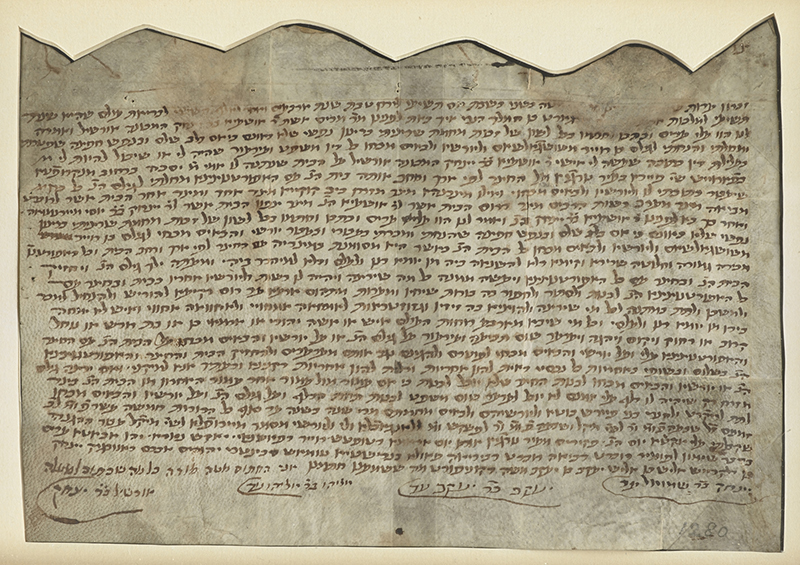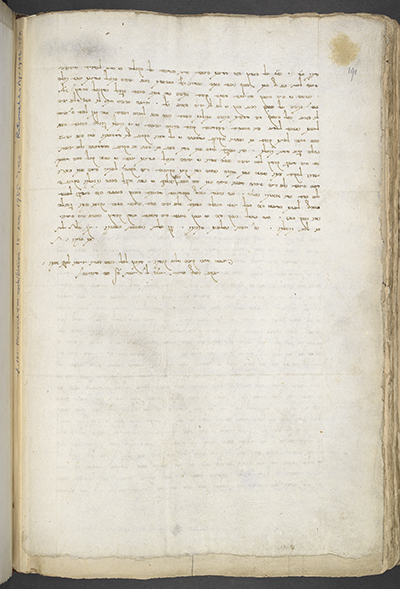British Library Hebrew Manuscripts Exhibition
The British Library’s ‘Hebrew Manuscripts: Journeys of the Written Word’ is the Library’s first public exhibition in a COVID-19 world. Visiting it was a strange experience. In the past, exhibitions were crowded affairs, creating queues of eager guests craning their necks to read panels or look at items. Now, socially distanced, my visit was a solitary one with the gallery attendant keeping watch over myself and one other as we made our quiet orbit around the cases. This atmosphere allowed for a very different mode of engagement with the beautiful treasures on display, one of quiet reverence and slower study, which suited the religious, legal, mystical and scholarly items on display.
The exhibition is a small one-room affair containing a collection of carefully-chosen items whose origins cover a vast geographic distance, from Kaifeng in the East to Casablanca in the West. The opening panel of the exhibition picks out centres of Jewish settlement across Eurasia and North Africa in tiny pricks of life, creating a constellation of communities across the world, and this promise of presenting the breadth of the Jewish experience throughout history is well met. Even in the first few items of the exhibition you go from the carefully calligraphy of the Kaifeng Torah Scroll to the beautiful illustrations of the Harley Catalan Bible. If there was any critique to be made, it would be that a visitor suffers a form of geographic whiplash as they bounce across continents from item to item – but this is the nature of a Diaspora spread across the world.

Hebrew deed of sale of a house in Norwich in the parish of St. Peter, by Oshaya ben Isaac of York known as Ursel le Eveske of Norwich ben Deulecresse, to William son of Roger of South Walsham. Norwich, England, 1280. Lansdowne Ch 667 • British Library
While many of the items in the exhibition originate from outside of Britain, one item offers a unique insight into Anglo-Jewish history. In a previous blog we talked about the Pipe Rolls, financial records from the Exchequer, which often feature Jewish merchants being extorted for vast sums of money. Here, however, we find a much more equitable exchange; a short legal document describes the deed of sale for a house in Norwich – Lansdowne Ch 667. Most unusually for an English legal document it is written in Hebrew. The seller is Oshaya ben Isaac of York, known as Ursel le Eveske of Norwich ben Deulecresse, on behalf of his wife Miriam, and the purchaser is William son of Roger of South Walsham. It is difficult to briefly unpack the details here as they tell an incredibly complex and fascinating story of co-existence in a time where that was rare, of interwoven legal systems, and giving us a very brief window into the life of a medieval Jewish woman. One single leaf of parchment opens up a world of possibilities and stories from Medieval England.

Response of Jacob Rafael of Modena, to a question relative to Jewish marriage law that might apply in the divorce of King Henry VIII from Catherine of Aragon. Italy, 1530 • British Library

Response of Jacob Rafael of Modena, to a question relative to Jewish marriage law that might apply in the divorce of King Henry VIII from Catherine of Aragon. Italy, 1530 • British Library
From here we will jump to a copy of a letter, also in Hebrew, written in reply to Henry VIII’s request for a biblical justification for the divorce of his wife Catherine of Aragon. He had sent messages across Europe in his ultimately futile desire to find a legal basis by which he could remarry, and one arrived at a home of the a Jewish scholar, Jacob Rafael of Modena. Unlike some of his contemporaries who supported the English position, possibly in exchange for some monetary reward, he replied that the Hebrew Bible would not support the King’s demands. Disappointed in this result, Henry would ultimately break from Rome and found the Church of England.
It isn’t all legal texts – there are works of science, translated from Arabic, Kabbalistic guides to mystical methods and wonderfully illustrated books from across the Jewish world. Dancing through time and space, it presents the history of the Jewish world from a sometimes overwhelming array of perspectives.
The exhibition is open until the 11th of April 2021 leaving plenty of time for visitors to book a slot and visit the British Library in King’s Cross. If you enjoy our Hidden Treasures then you’ll certainly find something in this exhibition that enchants and amazes you.
Hidden Treasures: Celebrating the documents, photos and artefacts in British archives that tell the story of Jews in Britain